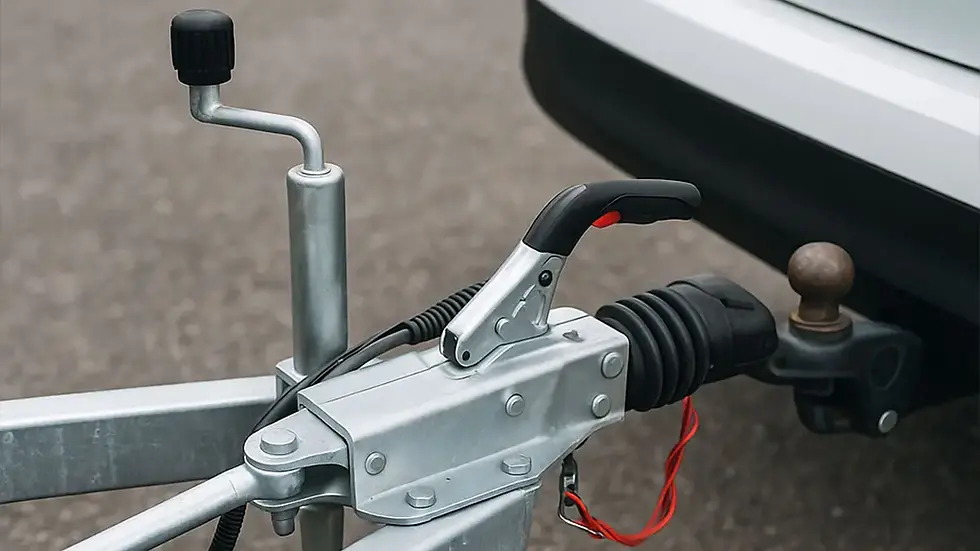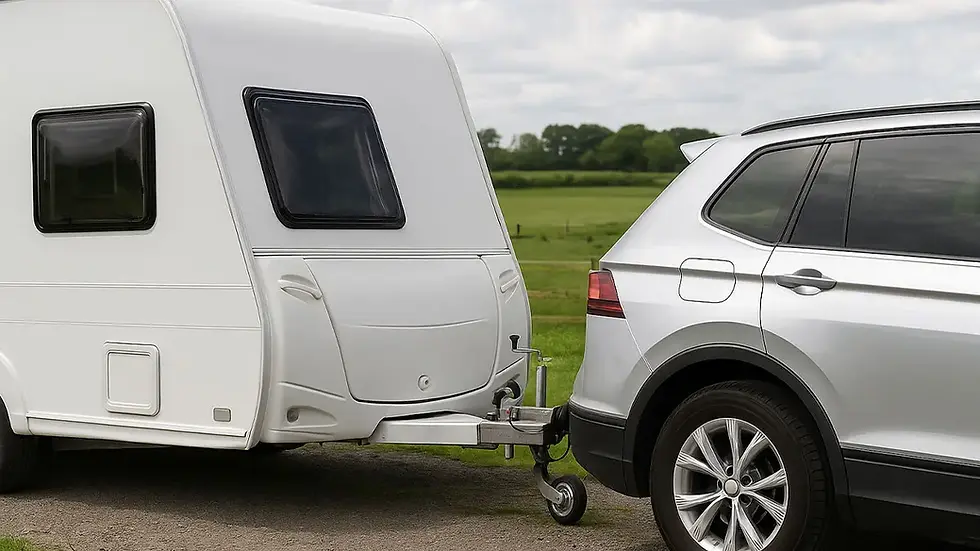Trailer Noseweight | What It Is and How to Check It | Brent
- Brent

- Jul 4
- 1 min read
Trailer noseweight is the downward force your trailer puts on the tow ball of your vehicle.
Get it wrong, and you’re looking at wobbles, poor steering, or worse – a trailer that wants to dance all over the road.
Too much noseweight?
Your car’s back end squats, steering gets light, braking gets dodgy.
Too little noseweight?
Your trailer starts to sway – and not in a good way.
How to Get Your Trailer Noseweight Right
You want a nice balance, usually about 5-7% of the trailer’s loaded weight pushing down on the tow ball.
Noseweight Example:
If your trailer and load together weigh 1,000kg, your noseweight should be roughly 50-70kg.
How to Measure Noseweight
Check Your Car’s Tow Bar Limit
Your vehicle manual will tell you the max noseweight your car can handle.
Use a Noseweight Gauge:
Yep, it’s a real thing. Super easy to use and worth every penny.
Bathroom Scales Trick:
Place a bit of wood on your bathroom scales, carefully lower your trailer jockey wheel onto it, and bingo – you’ve got a noseweight reading.
Why Noseweight Matters
Keeps your trailer stable
Helps your car steer properly
Improves braking performance
Stops that nasty trailer sway

Quick Brent Tips
Keep heavy stuff low and near the axle
Don’t overload the front or back
Always check your noseweight before setting off
Don’t rely on guesswork – get a proper reading
Bottom Line: Balance Is Everything
Whether you’re towing a plant trailer, a caravan, or a box full of camping gear, getting your trailer's noseweight right is non-negotiable.
Play it safe, load it smart, and you’ll have a smooth, drama-free tow.
-B to the Brent




Comments